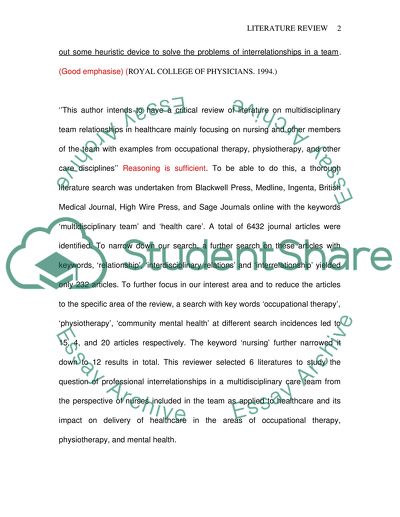Cite this document
(“Multidisciplinary Team Relationships in Healthcare Essay”, n.d.)
Multidisciplinary Team Relationships in Healthcare Essay. Retrieved from https://studentshare.org/miscellaneous/1525572-multidisciplinary-team-relationships-in-healthcare
Multidisciplinary Team Relationships in Healthcare Essay. Retrieved from https://studentshare.org/miscellaneous/1525572-multidisciplinary-team-relationships-in-healthcare
(Multidisciplinary Team Relationships in Healthcare Essay)
Multidisciplinary Team Relationships in Healthcare Essay. https://studentshare.org/miscellaneous/1525572-multidisciplinary-team-relationships-in-healthcare.
Multidisciplinary Team Relationships in Healthcare Essay. https://studentshare.org/miscellaneous/1525572-multidisciplinary-team-relationships-in-healthcare.
“Multidisciplinary Team Relationships in Healthcare Essay”, n.d. https://studentshare.org/miscellaneous/1525572-multidisciplinary-team-relationships-in-healthcare.


